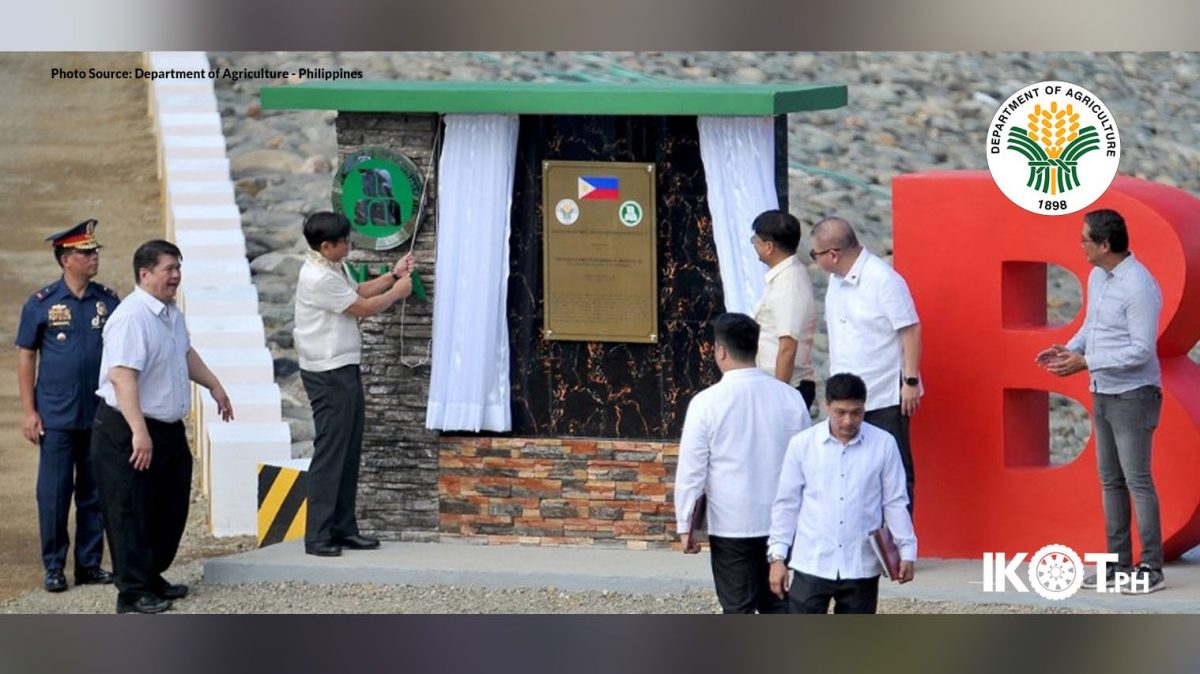The Department of Agriculture (DA) broke ground on a P2.43-billion irrigation project that will improve the lives and livelihood of farmers and aquaculture investors in Dona Remedios Trinidad (DRT), Bulacan.
Agriculture Secretary Francisco Tiu Laurel Jr., who led the groundbreaking ceremony, highlighted the Small Reservoir Irrigation Project (SRIP) located in Barangay Bayabas of the town.
“Four years from now, people of Bulacan and Pampanga will benefit from the Bayabas SRIP (Small Reservoir Irrigation Project)—especially our rice and crop producers,” Tiu Laurel said.
The agriculture chief led the groundbreaking ceremony in the DRT, one of the largest towns in Bulacan named after the maternal grandmother of President Ferdinand Marcos Jr.
“Ito’y tiyak na makakapagpataas ng ani at kita.”
“Ito’y tiyak na makakapagpataas ng ani at kita. Hangarin po ng ating Pangulo na pataasin ang antas ng pamumuhay ng mga magsasakang Pilipino,” the agriculture head added.
Tiu Laurel recently accompanied President Ferdinand Marcos Jr. in inaugurating the P1.28-billion Balbalungao SRIP in Lupao, Nueva Ecija, and in turning over in Subic the first batch of heavy equipment procured by the National Irrigation Administration.
The Balbalungao SRIP will cover 976.2 hectares and benefit 560 farmers. Aside from irrigating farm lands in Lupao, the project will also offer tourism and fishery opportunities to residents of the area.
The turnover in Subic is part of NIA’s three-year, P2.59-billion re-fleeting program that will involve more than 330 excavators and other heavy equipment to support various irrigation projects and maintenance activities.
Meanwhile, NIA’s Bayabas SRIP will irrigate 150 hectares of new areas and 27,828 hectares in 17 towns in Bulacan and Pampanga. The project is also expected to help ease the lingering flooding problem in the two food-producing provinces just north of Metro Manila.
Tiu Laurel said the Bayabas SRIP is also envisaged to generate electricity from solar and hydropower components of the irrigation infrastructure, and help in promoting aquaculture in the area.
“Continuing irrigation development will increase agricultural production and minimize importation of rice and high-value crops.”
“Continuing irrigation development will increase agricultural production and minimize importation of rice and high-value crops,” he stressed.
Tiu Laurel urged the public to support the government’s push to modernize agriculture, which he stressed is key to achieving President Marcos’ top priority of food security and rice self-sufficiency.
At the end of 2022, NIA reported that of the total 3.13 million hectares of irrigable land, just a third or around 990,559 hectares are covered by NIA projects. Including communal, private and government-supported irrigation projects, irrigation coverage only account for 67 percent.
Rice yield, according to PhilRice data, is at 4.48 metric tons in 2022 for irrigated farms compared to 3.24 tons for rainfed areas.



